
Sprouting a dried bean changes it from a stodgy but long-lasting staple to a fresh vegetable bursting with vitamins. Asian cultures have known this for centuries, using sprouts raw or cooked in soups, stir-fries and salads. Raw sprouts are pleasantly crisp and moist, but are unfortunately prone to harboring harmful bacteria. Health authorities recommend cooking or blanching them to minimize the risk of foodborne illness.
Beans and Sprouts
A dried bean and its sprout are two very different foods. The bean itself is a seed, designed to produce a new bean plant. Much of its volume is taken up with starches and proteins that are intended to fuel the growth of the new plant. Humans can't digest the beans well unless they're cooked. Even then, some indigestible complex sugars remain behind to cause beans' signature flatulence. When the bean sprouts, its own natural enzymes begin breaking down those fuel stores. The resulting sprout is completely digestible, and produces higher quantities of vitamin C and some other nutrients than the dried bean.
Growing Sprouts
Fresh bean sprouts are available in most supermarkets and Asian stores, and they're straightforward to produce at home. Commercial bean sprouts are made from small green mung beans, though others are suitable for sprouting as well. The beans must be soaked and then drained, and kept moist in a dark, warm place for a few days until they sprout. Unfortunately the same conditions that stimulate the beans' growth are also ideal for many potentially dangerous microorganisms, or pathogens.
Bacteria in Sprouts
Beans can become contaminated with salmonella and E. coli naturally, while they're still on their parent plant. In that case the pathogens are physically located inside the bean, where they'll quickly begin to grow when the bean is sprouted. Improper handling and non-sterile utensils can also cause salmonella, E. coli and Listeria monocytogenes to establish colonies in bean sprouts. Even under refrigeration, they can quickly grow to levels that will cause illness. The federal government's food safety information website cites over 30 sprout-related outbreaks of foodborne illness in the U.S. since 1996, and dozens were killed in an especially bad 2011 outbreak in Germany.
Sprouts and Safety
Sprouts are often eaten raw or lightly cooked in salads, stir-fries and as a garnish on pho and other Asian dishes. Eating them raw or minimally cooked permits any pathogens to survive until they reach your plate, potentially resulting in illness. For the highest level of food safety, bean sprouts should be blanched in boiling water for at least 30 seconds or in a steamer for at least 1 minute. To stop the cooking immediately afterward, and preserve as much of their crisp texture as possible, transfer the sprouts to a bowl of icewater until they're chilled. The blanched sprouts will shrink and will lose a small percentage of their vitamins, but will be safe to eat.
Related Articles
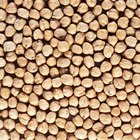
How to Know When Sprouted Garbanzo ...
How to Freeze Fresh Shelled Black Eyed ...

How to Store Alfalfa Sprouts

Beans Vs. Lentils

How to Cook Broad Bean Shells
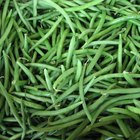
How to Blanch Green Beans for Freezing

Do You Need to Soak Lentils Before ...
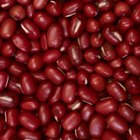
How to Soak Adzuki Beans
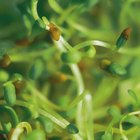
Why Do Sprouts Taste Bitter?

How to Freeze Pole Beans

Does Falafel Go Bad?

Are Bean Sprouts Good for You?

How to Remove Mold From Coffee Beans

How to Freeze Shelled Edamame
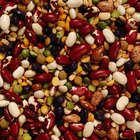
What Type of Beans Are Good for ...

The Hippocrates Diet

The Difference Between Dried Peas and ...
How Long Can Food Stored in Canning ...

How to Freeze Edamame Soybeans

Do Beans Cook Faster Covered?
References
- On Food and Cooking: The Science and Lore of the Kitchen; Harold McGee
- Food Safety.gov: Hold the Raw Sprouts, Please
- Food Safety.gov: Sprouts -- What You Should Know
Writer Bio
Fred Decker is a trained chef and prolific freelance writer. In previous careers, he sold insurance and mutual funds, and was a longtime retailer. He was educated at Memorial University of Newfoundland and the Northern Alberta Institute of Technology. His articles have appeared on numerous home and garden sites including GoneOutdoors, TheNest and eHow.
Photo Credits
Jupiterimages/Comstock/Getty Images